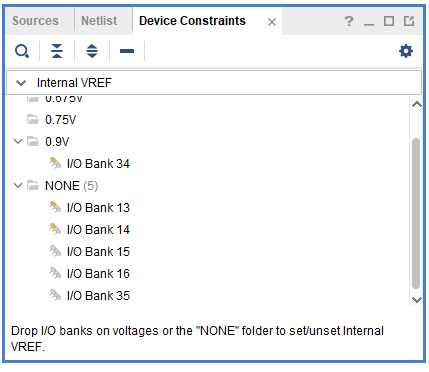I'm new to FPGAs and I'm trying to determine how an FPGA determines whether to register an input as a logic 0 or 1. The FPGA I am using is the Artix 7 and I would like to connect it to a function generator giving a square wave that toggles between 0 and 3.3 V.
In my constraints file I set the pins where I am connecting the function generator to the LVCMOS33 IO standard. Do I need to set the logic threshold as well or is it automatically set at 1.65 V since I have the standard at 3.3 V?
Here is the FPGAs data sheet for switching characteristics, but I haven't found any threshold information.


